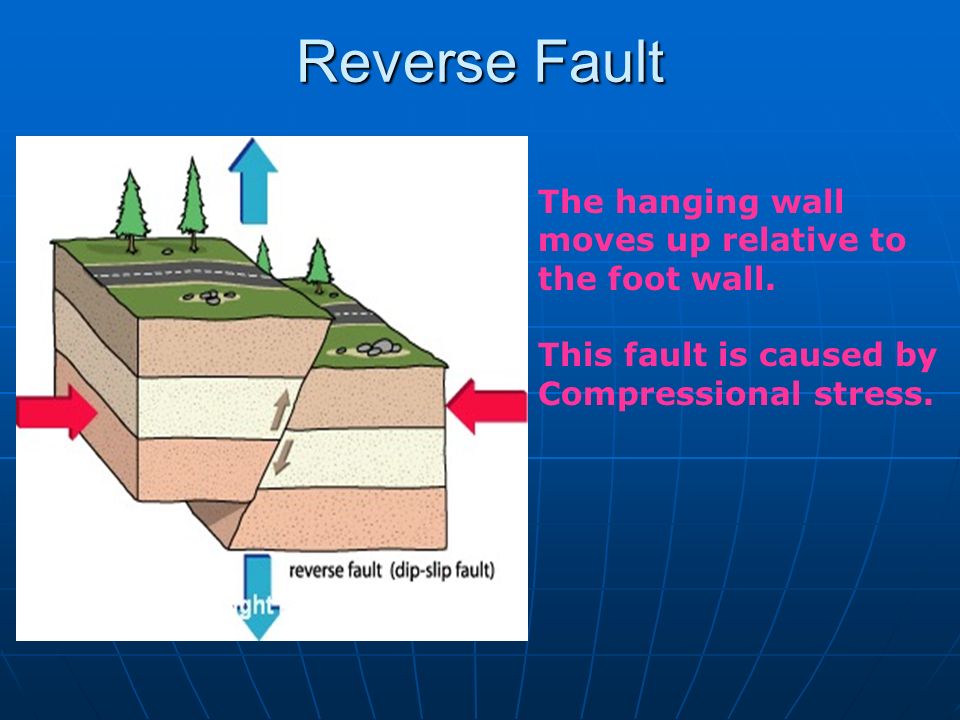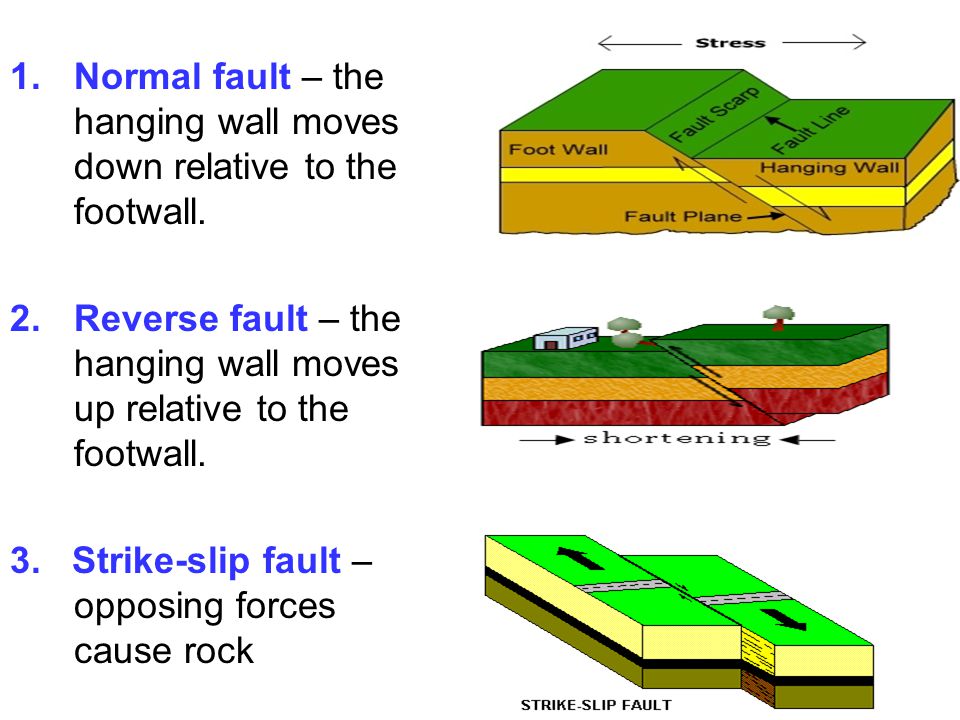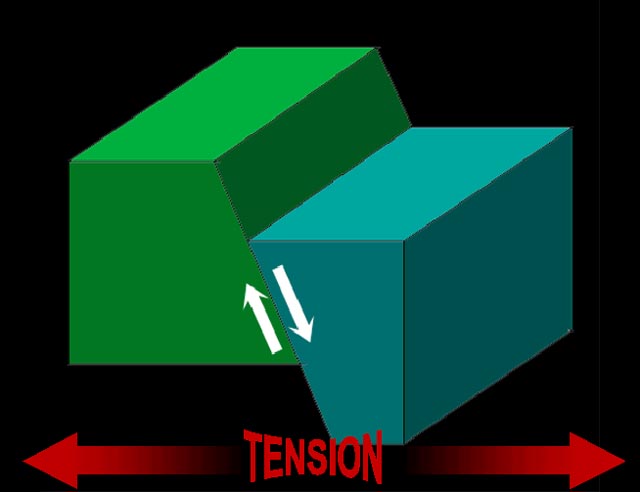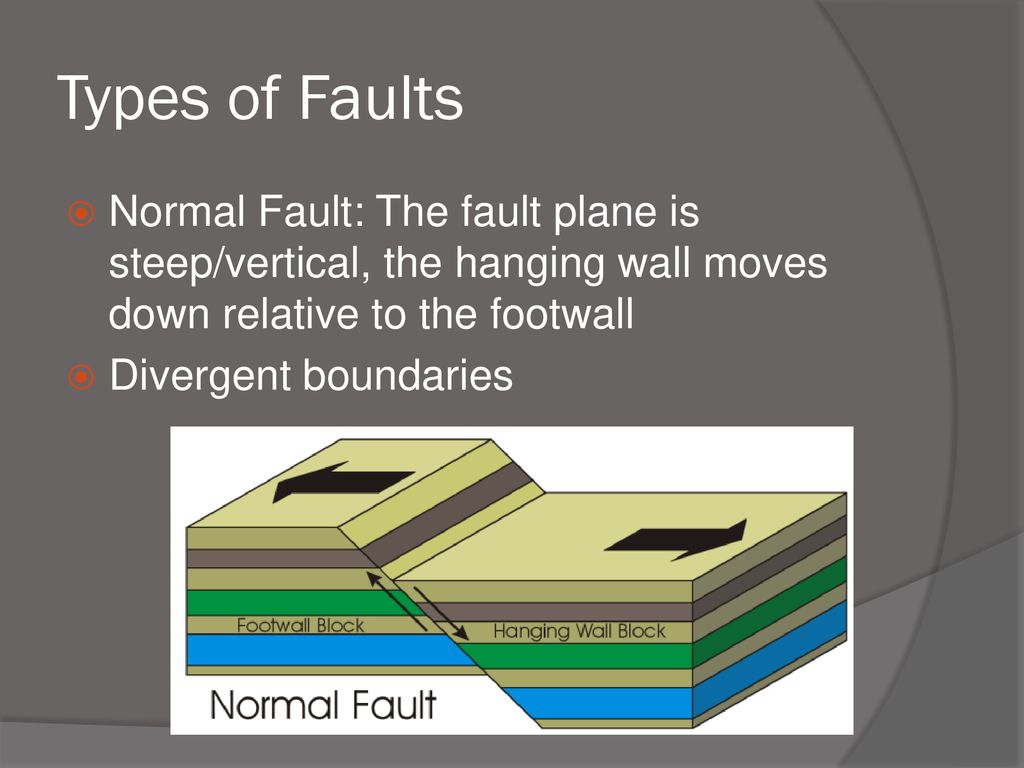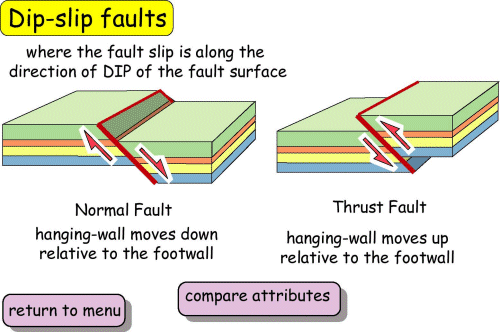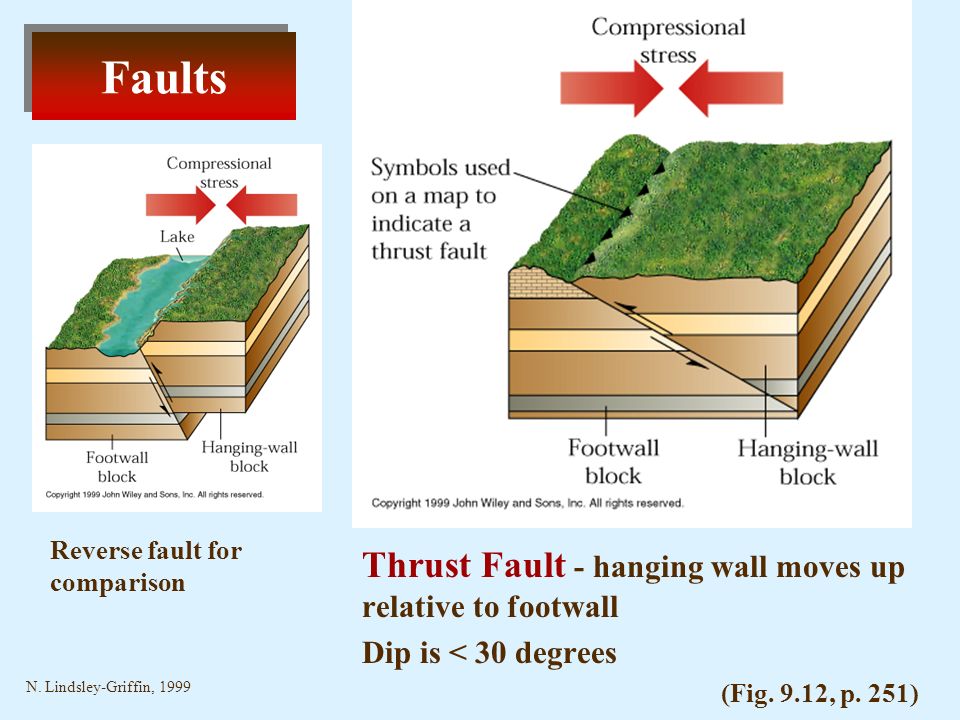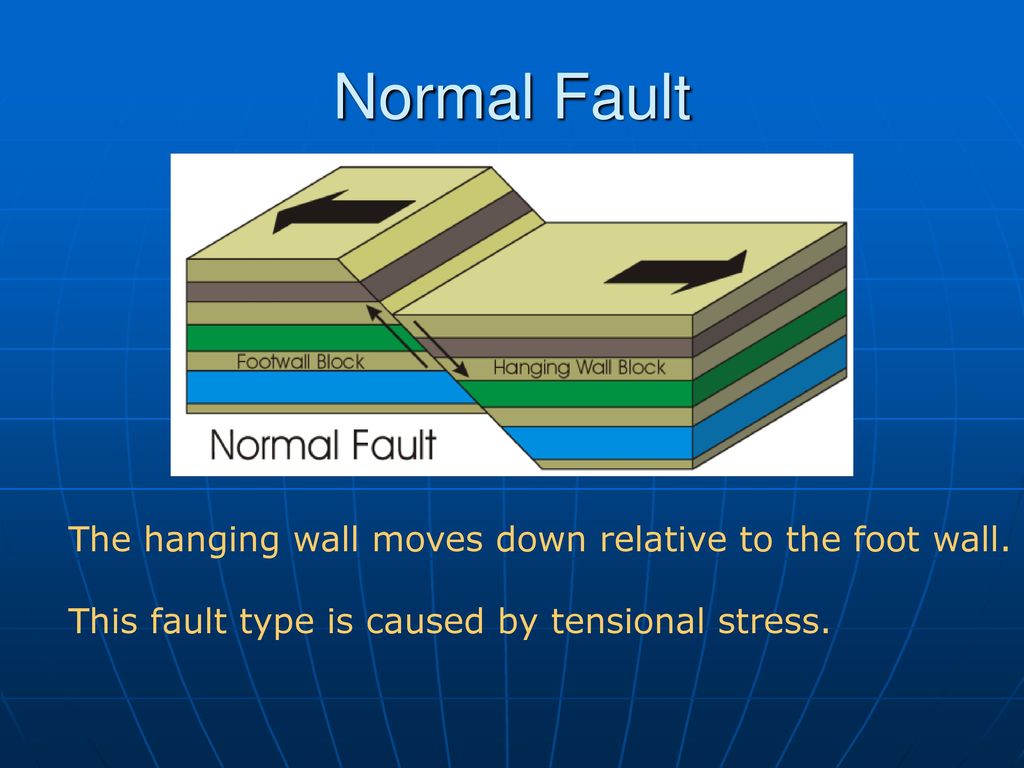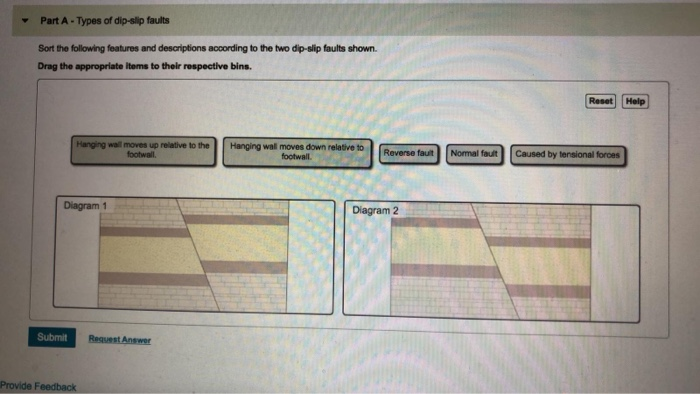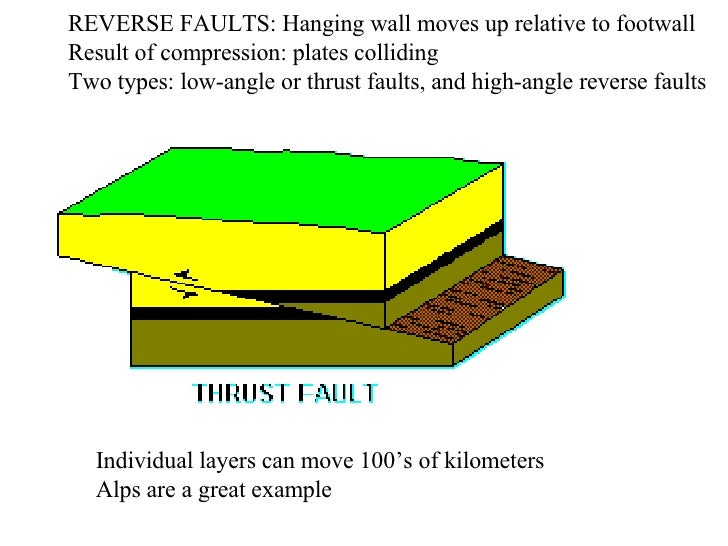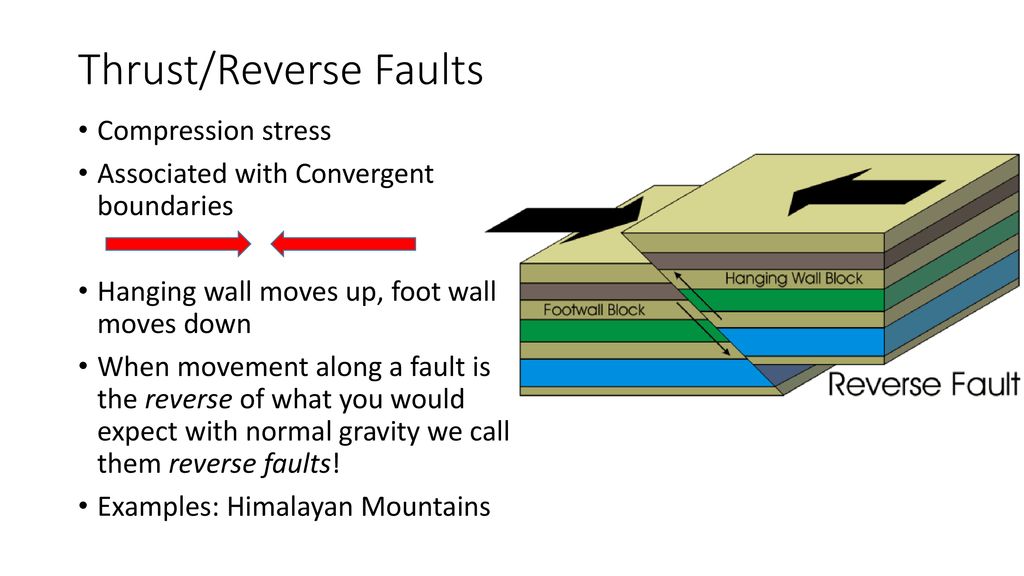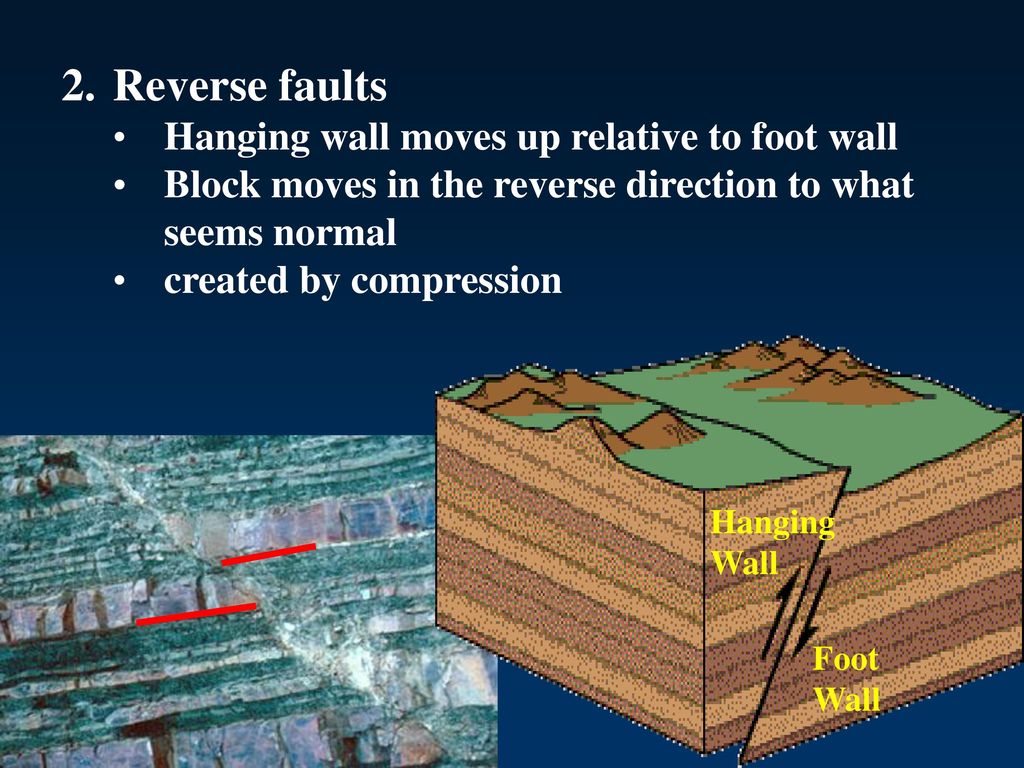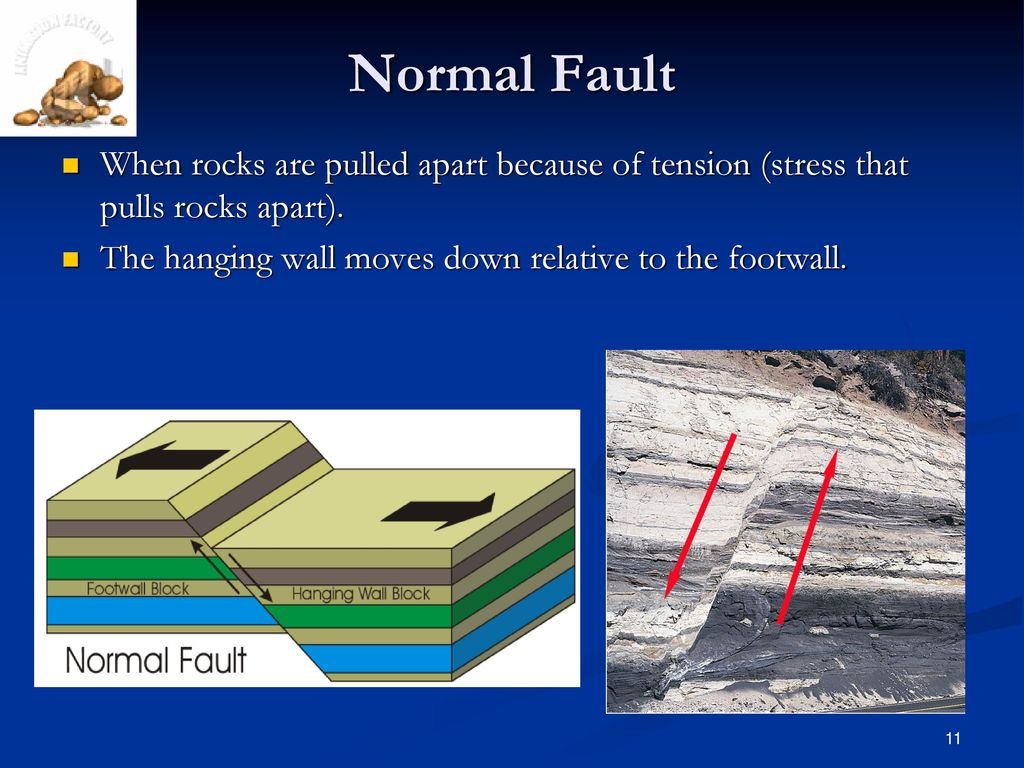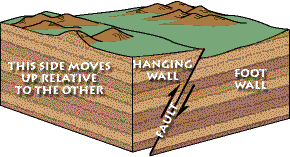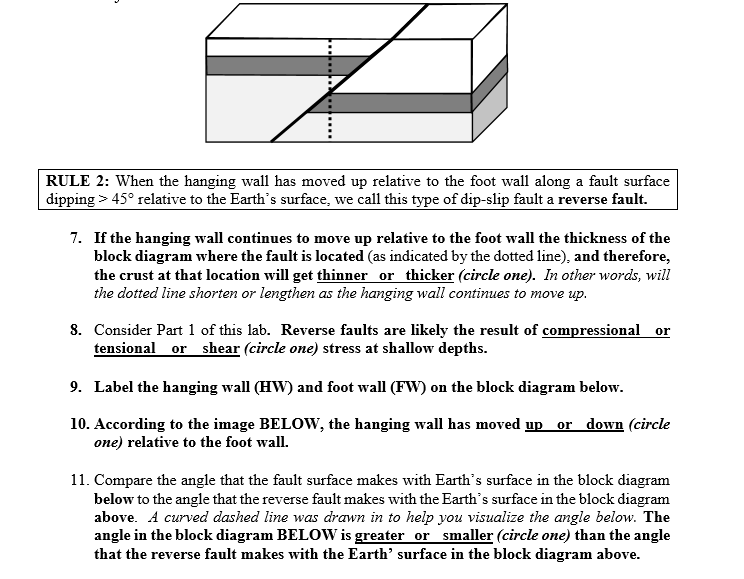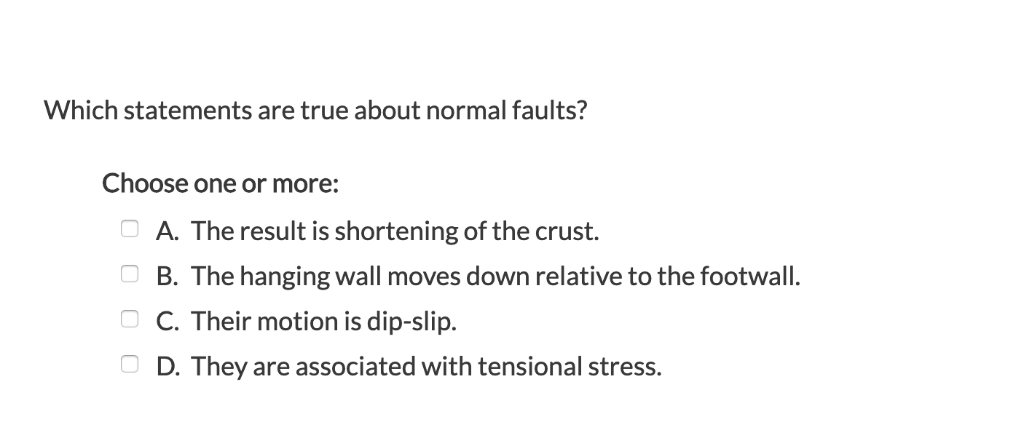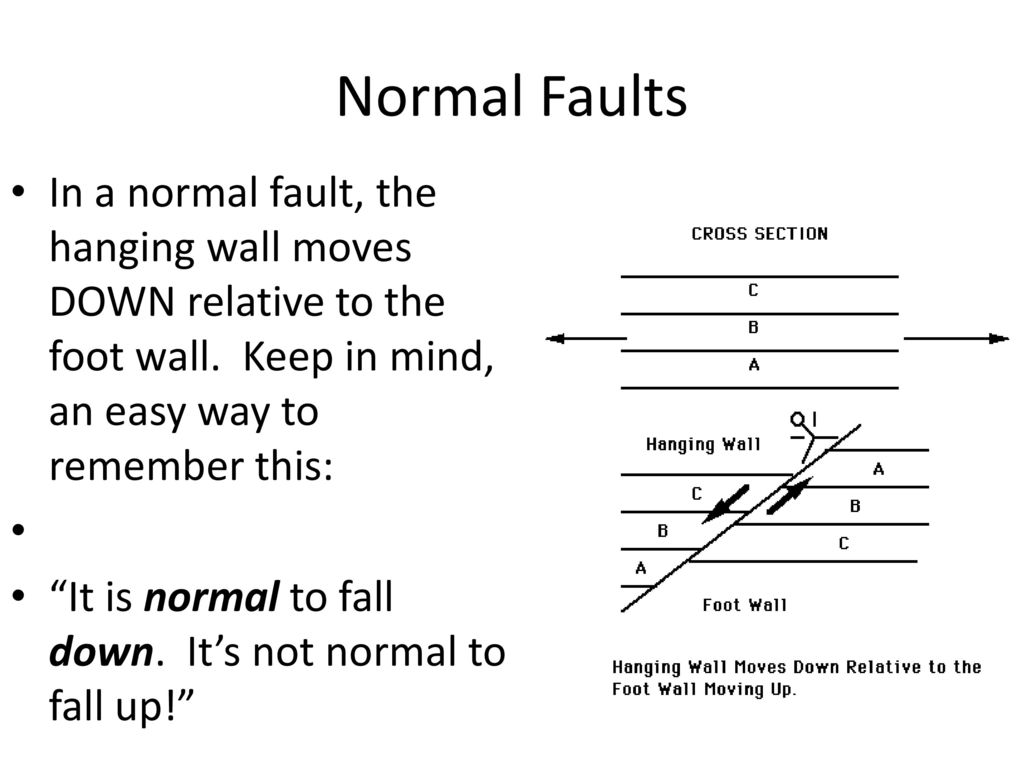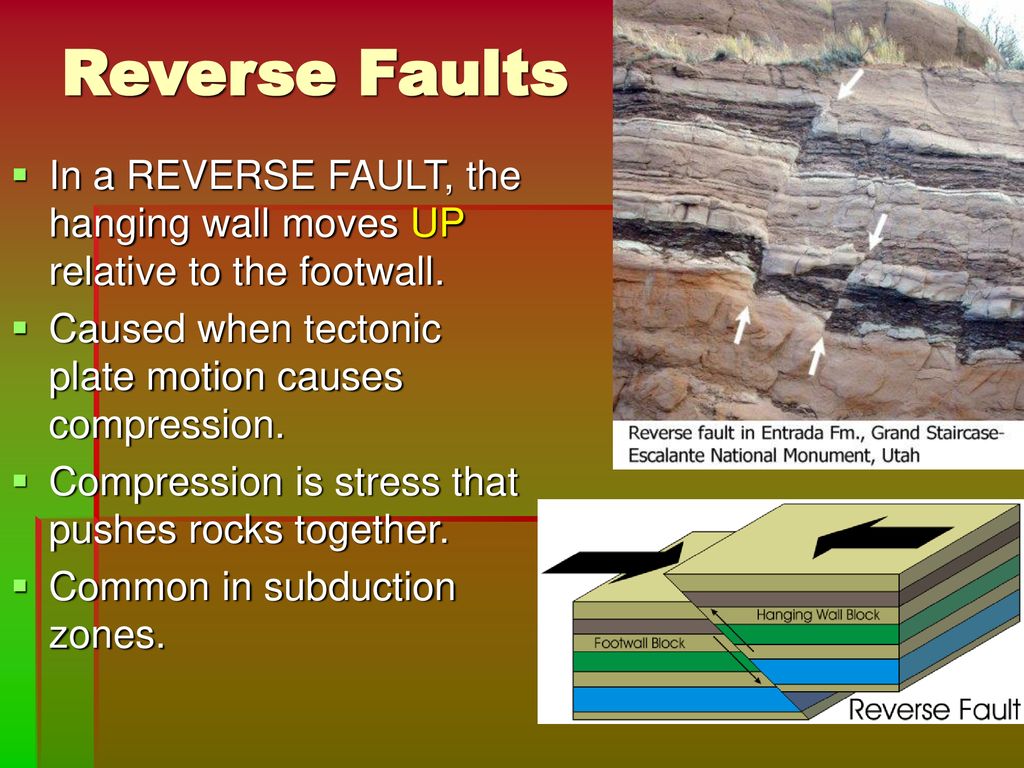Hanging Wall Moves Up Relative To Footwall

When rock layers are squeezed together and pushed upward.
Hanging wall moves up relative to footwall. The footwall moves down relative to the hanging wall. They bound many of the mountain ranges of the world and many of the rift valleys found along spreading margins. Reverse faults high angle fault hanging wall moves up relative to footwall. A reverse fault is the opposite of a normal fault the hanging wall moves up relative to the footwall.
Normal fault s are common. The dip of a reverse fault is relatively steep greater than 45. The crust experiences extension. These usually happen when tectonic forces causes compression that pushes rocks together.
A fault in which the hanging wall moves up relative to the foot wall. The blind thrust faults often end in a fold. The hanging wall moves down relative to the footwall. Strike slip faults high angle fault two sides move pass each other horizontally.
The hanging wall moves up relative to the footwall. In fault normal dip slip faults are produced by vertical compression as earth s crust lengthens. The hanging wall will slide upwards right. Opposing forces cause rock to break and move horizontally.
In a reverse fault the hanging wall block moves up relative to the footwall block. Faults occur when opposing forces causes rock to break and move horizontally. When movement along a fault is the reverse of what you would expect with normal gravity we call them reverse faults. This is true of normal faults.
A fault in which the hanging wall moves down relative to the footwall. In thrust or reverse faults the hanging wall moves up relative to the footwall and in strike slip faults it moves horizontally relative to the footwall. The terminology of normal and reverse comes from coal mining in england where normal faults are the most common. A fault that does not break the ground surface.
Strike slip faults have a different type of movement than normal and reverse faults. When the hanging wall moves up in relative to the footwall it is called a fault. Thrust faults low angle fault hanging wall moves up relative to footwall. The hanging wall slides down relative to the footwall.






